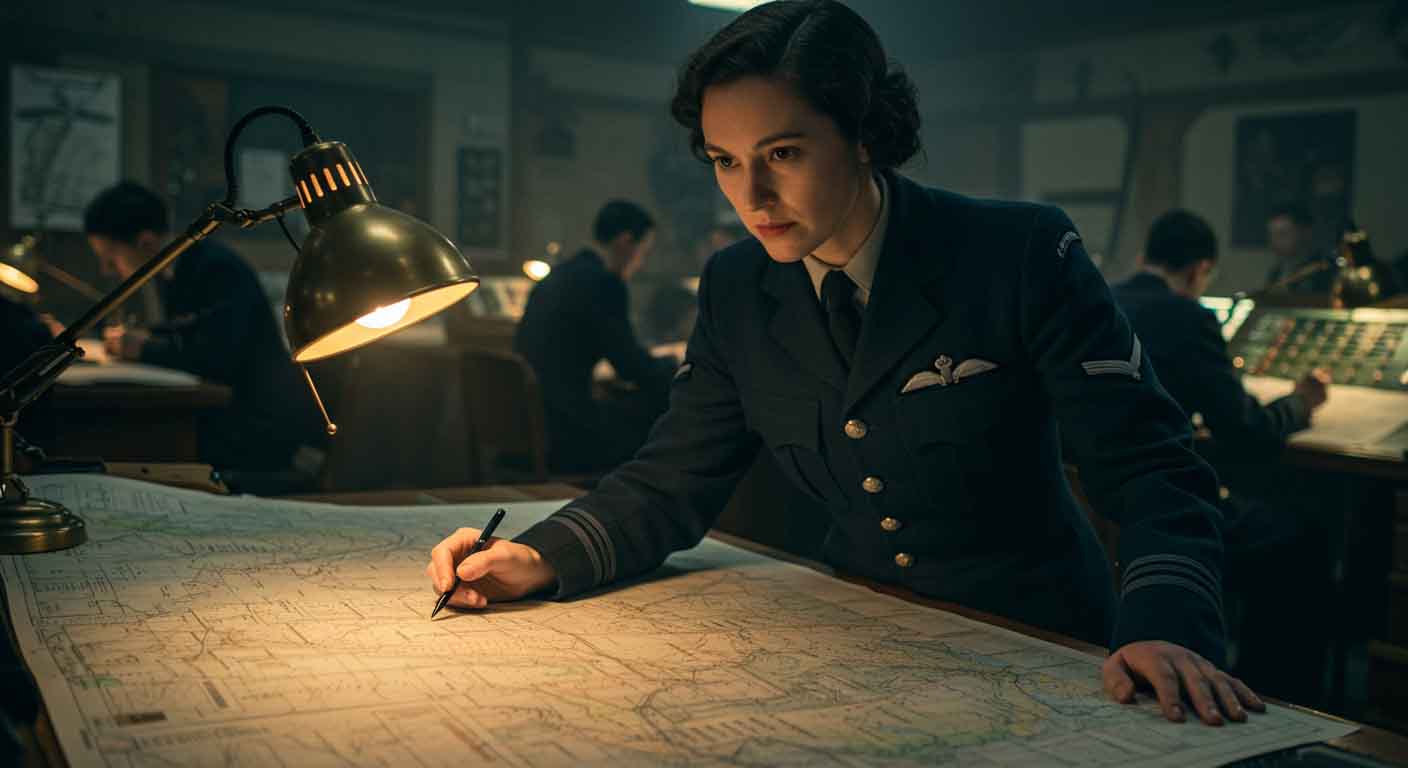Below the Streets of Westminster: A Summary of the Churchill War Rooms
Our journey into the Churchill War Rooms begins amidst the terrifying backdrop of wartime London, a city shrouded in the blackout and bracing nightly for the mournful wail of air raid sirens and the devastating impact of German bombs. It was in this “Darkest Hour” that a secret sanctuary, an underground complex hidden beneath government buildings at Storey’s Gate, became the nerve centre of Britain’s desperate struggle for survival. These were not just offices; they were a fortress of strategy, a communications hub, and a shelter from which Winston Churchill, the indomitable wartime Prime Minister, would direct the nation’s fight. The story of the War Rooms is inextricably linked with Churchill himself, the physical space becoming an extension of his will and a symbol of Britain’s defiance. Their enduring fascination lies in this potent mix of grand historical events and the intensely personal human dramas that unfolded within their reinforced concrete walls.
The genesis of this secret bastion can be traced back to the turbulent 1930s, a decade marked by rising European fascism and the chilling realisation of what aerial bombardment could mean for a city like London. The Munich Crisis of 1938 acted as a stark catalyst, accelerating defence preparations, including the urgent need for a secure government war room. The Committee of Imperial Defence was tasked with finding a suitable location, one that was central, structurally sound or capable of reinforcement, discreet, and equipped with reliable communication links. After considering various options, the unassuming basement of the New Public Offices at Storey’s Gate, with its proximity to Downing Street and Parliament, was chosen. Initial conversion work began in 1938, focusing on strengthening the structure with concrete and steel – the first iteration of “the Slab” – and installing basic ventilation, lighting, and communication lines. This initial “Central War Room” (CWR) became operational just before the declaration of war in August 1939, serving Neville Chamberlain’s government during the “Phoney War,” a period that allowed for the crucial testing and refinement of its systems before the true storm broke.
With Churchill’s appointment as Prime Minister in May 1940, the War Rooms were transformed. He embraced the bunker as his operational heart, and his dynamic, demanding leadership style fundamentally shaped its rhythm. As the Blitz intensified, further fortifications were urgently undertaken, most notably the dramatic thickening of “the Slab” to provide enhanced protection. The complex itself grew organically, with new rooms and corridors being excavated or repurposed to meet the evolving needs of a global war. At the core of this subterranean world were several key rooms, each with its own vital function. The Cabinet War Room, with its iconic baize-covered table and Churchill’s scarred wooden chair, was where the War Cabinet and Chiefs of Staff made monumental decisions, from the response to Dunkirk to the planning for D-Day. The atmosphere was intense, often smoke-filled, as strategies were debated and Britain’s path through the war was charted.
Equally critical was the Map Room, the 24/7 operational hub where information from every theatre of war was collated and meticulously plotted by dedicated teams of officers, many of them women from the Wrens, ATS, and WAAFs. Vast maps lined the walls, tracking naval convoys, air operations, and army movements, each pinprick representing a ship, a squadron, or a significant event. This room was the eyes and ears of the nation, providing a constantly updated visual intelligence picture. Nearby, Churchill’s Office-Bedroom served as his private domain, a surprisingly spartan suite from which he worked late into the night, dictated speeches, and delivered some of his most famous broadcasts to the nation via an installed BBC microphone. The Transatlantic Telephone Room housed the revolutionary Sigsaly encryption system, providing a secure voice link between Churchill and US President Franklin D. Roosevelt – a vital channel for coordinating Allied strategy. Even a small, simple room was set aside for Mrs. Clementine Churchill, offering a touch of domesticity and a place for her to provide crucial support to her husband. The Chiefs of Staff Conference Room provided a dedicated space for the heads of the Army, Navy, and Air Force to coordinate military strategy, while a network of supporting infrastructure, including the GPO switchboard, typists’ rooms, kitchens, and dormitories, kept the entire complex functioning.
Life beneath the Blitz for the hundreds who worked in the War Rooms was a unique and challenging experience. This subterranean society, comprising military officers, civil servants, secretaries, telephonists, and maintenance crews, endured a constant lack of natural daylight, recycled air, and the background hum of machinery. The psychological pressure was immense, with the underlying fear of a direct hit and the strain of long, arduous hours. Yet, this shared adversity also fostered extraordinary camaraderie and a powerful esprit de corps. Bonds of friendship were forged in the crucible of crisis, and a sense of shared purpose united everyone, regardless of rank. Personal lives were put on hold, and sacrifices were made daily, all contributing to the vital work of the bunker. Figures like General Sir Hastings “Pug” Ismay, Churchill’s chief military assistant, and his dedicated private secretaries, played crucial, if less heralded, roles in the smooth operation of this nerve centre, all while bound by the Official Secrets Act and the weight of the classified information they handled.
As the war drew to its conclusion, the War Rooms remained central to directing the final acts. The collapse of the German Reich and the ongoing war against Japan were meticulously tracked from below. VE Day in May 1945 brought immense relief, though the work continued. Following Churchill’s surprising electoral defeat in July 1945, Clement Attlee’s new Labour government oversaw the final stages of the war from the bunker, including the momentous news of the atomic bombs and Japan’s surrender on VJ Day in August 1945. With total victory achieved, the decision was made to decommission the War Rooms with remarkable speed. By the end of August 1945, the lights were effectively turned off. This swift abandonment, driven by cost and the return to peacetime governance, inadvertently led to the site’s extraordinary preservation. Much was simply left in situ – maps on walls, papers on desks – transforming the bunker into an unintentional time capsule, a sleeping giant awaiting rediscovery.
For over three decades, the War Rooms lay largely forgotten, under the minimal custodianship of the Ministry of Works. However, by the late 1970s, a growing interest in preserving wartime heritage led to a campaign for their recognition. The Imperial War Museum (IWM) stepped in, undertaking initial surveys and immediately grasping the site’s unparalleled historical significance. The task of conservation was immense, battling decades of damp and dust. Adopting a “Conserve As Found” philosophy, the IWM meticulously worked to stabilise and preserve the rooms, retaining their authentic wartime atmosphere rather than over-restoring them. In April 1984, the Churchill War Rooms opened to the public, captivating visitors with their raw authenticity and the palpable sense of history. To provide a broader understanding of Churchill himself, the dedicated Churchill Museum was opened within the complex in 2005, featuring interactive exhibits like the “Lifeline” digital table and personal artifacts that illuminate his entire life and career. The IWM continues its vital stewardship, balancing visitor access with the ongoing conservation needs of this fragile and unique environment.
Visiting the Churchill War Rooms today, in May 2025, remains a profound experience. The descent into the cool, hushed corridors immediately transports you to another era. The preserved Cabinet Room, Map Room, and Churchill’s Office-Bedroom offer an almost uncanny sense of stepping directly into the past. The modern Churchill Museum complements this by providing rich biographical context. The overall atmosphere is one of solemnity and awe, a tangible connection to the momentous decisions and human dramas that unfolded there. This is achieved through careful management by the IWM, including timed ticketing and ongoing conservation efforts, ensuring the site’s integrity while fulfilling its educational mission to inspire learning and reflection for future generations.
The enduring legacy of the Churchill War Rooms is multifaceted. They stand as a powerful monument to British resilience and the collective spirit of a nation under siege. They offer an intimate and humanising insight into Winston Churchill’s wartime leadership, grounding his iconic status in a real, working environment. For many, the site is a sacred space, a poignant reminder of the true cost of freedom and the sacrifices made to defend it. Its depiction in popular culture, such as the film “Darkest Hour,” has further cemented its place in public consciousness, often inspiring visits to the authentic site. Even now, the War Rooms offer timeless lessons about leadership in crisis, the importance of intelligence, and the human capacity for endurance and innovation, urging us to remember the past as we navigate the complexities of the present. While the War Rooms were a critical nerve centre, they existed within the broader context of London’s wartime experience, a city that became a frontline, with its citizens enduring the Blitz in shelters and contributing to the war effort in countless ways. The decisions made underground directly impacted the lives of those above, and the city’s ordeal, in turn, shaped the work within the bunker.
In conclusion, the Churchill War Rooms are far more than just a historical site; they are a testament to courage, a warning about conflict, and a source of inspiration. Their remarkable preservation allows them to speak with an unsilenced voice, transporting visitors back to a pivotal moment in history and offering enduring insights into leadership, sacrifice, and the enduring importance of democratic values. They hold a unique and indelible place in the narrative of the Second World War, their echoes continuing to resonate deeply with all who descend into their historic depths.

